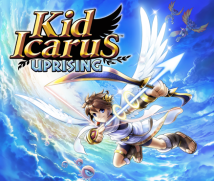5. Powers and Weapons
We said that the biggest point about this game is the Fiend’s Cauldron, but what other new elements are there?
As an aubergine, you can’t use your limbs! (laughs)
But you do still have legs!
Oh, right. (laughs)
But it isn’t okay to just recklessly choose powers. You have to consider the characteristics of your weapons to a certain degree.
You should choose powers that make the best of the abilities of the weapon you have equipped.
That’s right. But you can’t have all the powers you want. You have to fit pieces into a grid . It’s like packing a box lunch!
Right! (laughs)
Another goal this time was to make it so you can use the powers and weapons both when playing solo and in arena matches.
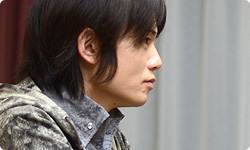
You mean that players can take what they have gained in one mode with them into the other mode?
Right.
We talked about how you can get powerful weapons by increasing the Intensity Setting via the Fiend’s Cauldron and overcoming challenging chapters, but can you do that in battles as well?
Yes. But in battles, if someone who keeps winning gets the best weapons, it would be unbalanced. Strong players have lots of weapons, so less skilled players would never get anything.
Strong players would love it but others wouldn’t.
For that reason, we made it so that you get weapons by something like a lottery.
So even players who lose can get good weapons?
Yes. If they try hard.
What if they don’t try hard?
Players who don’t move at all in battle don’t get rewarded.
In other words, you don’t get any rewards unless you work hard for it! (laughs)
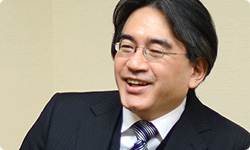
For that reason, you can’t hope to form a battle session and then get something without doing anything. I think it is incredibly important to prioritize those who try their hardest regardless of victory or defeat.
I see. Are there other ways to get good weapons?
There’s a system called Fuse Weapons . If you combine weapons, a different type is formed with the strengths and skills of its components. You can really get hooked on repeating that to add your favourite skills to your favourite weapon. And Weapon Gems pile up via the StreetPass14 feature. 14. StreetPass: A feature that allows users who enable it to walk around with their Nintendo 3DS system turned on to exchange certain game data with other Nintendo 3DS users whom they pass on the street that also have StreetPass enabled.
You get gems by passing people.
Yes. If you make a gem, the weapon doesn’t disappear . And the strength of your weapon carries on. Restoring gems requires money, or hearts. You can make the weapon your own by paying hearts to restore the gems you have . However, if you try to get a high-power weapon, it costs a lot of money, like one hundred thousand.
That’s expensive! (laughs)
But there is a way to make them cheaper. It’s called Fuse Gems. You can fuse together separate gems . This way is cheaper than directly restoring your gems. And you can grind down gems you don’t want and turn them into hearts . In other words, the more you pass people…
…the richer you get in several ways.
Right. And we plan to distribute one gem per day via the SpotPass15 feature. 15. SpotPass: A feature in the Nintendo 3DS system that when activated receives various information and content when near a wireless LAN access point. The gem distribution will continue daily after game release until further notice.
Players will get even richer! (laughs) Is there an ultimate goal to increasing the value of weapons like that?
No. If the value of your weapons is high - in other words, if your weapons are strong - it may confer advantage playing solo, but in battles, that isn’t necessarily so.
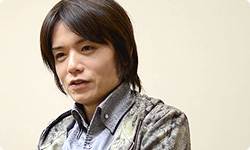
Why is that?
For three-on-three battles, we established the rule that once your Team Life Gauge reaches zero, one team member becomes an angel, and if you beat that angel, you win. When you battle, and someone with really valuable weapons gets defeated, his or her team’s life gauge drops drastically .
So if you equip weapons that are highly valuable disproportionately to your skills…
Yes. If you get done in right away, your team takes massive damage.
That, too, is risk and return.
It is. There are characteristic differences between solo and battle modes. In order to win in single player, it’s actually slightly advantageous to have a weapon that doesn’t have a high attribute in homing. The size of the enemies is comparatively larger, so you can defeat them even without much homing abilities.
But in battles, your opponents are the same size as you, so…
Right, right. Strong homing weakens you somewhere else. Homing shots are more important in battles than in solo mode, so rather than that, placing emphasis on other areas is more useful.
I see. In that respect, you’ve prepared a deep game with elements that will allow players to play a long time.
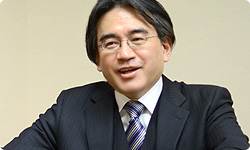
That’s right. You can try out all sorts of patterns, so debugging was quite a challenge! When it came to adjusting the balance of the battle mode, we adopted a different policy than for Smash Bros.
How so?
For Smash Bros., rather than listening to the testers’ opinions, we watched videos of battles between the testers, studied their stats, tactics and traits, and determined the parameters then. Surprisingly, a lot of the times, the testers’ opinions are biased and it’s difficult to grasp the changes in the strength of the moves each day. This time, we wanted to draw out the opinions of the testers more correctly. But instead of simply swallowing whatever opinions arose, we tried first dividing them into one-on-one and three-on-three teams and checking the opinions from each other’s point of view. For example, if a three-on-three team said, “This is too strong, so make it weaker,” a one-on-one team might say, “No, it has such-and-such an effect, and so you can’t weaken it.”
The conditions when you play are different than for Smash Bros., so you had each person who played offer their opinions.
Yes. After roughly establishing the essential characteristics, we gathered the testers’ results, and directly implemented adjustments. After all, they were the conclusions of people who had played the game intensively for months, so I thought they were significant. There were a lot of weapons, so tuning them was truly a challenge. But that resulted in broad enjoyability, so I hope people will have fun playing it together, ideally face-to-face with people nearby.
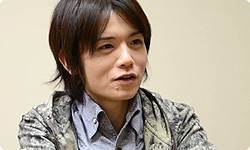
(to be continued)
*The next interview will appear after release of Kid Icarus: Uprising.
